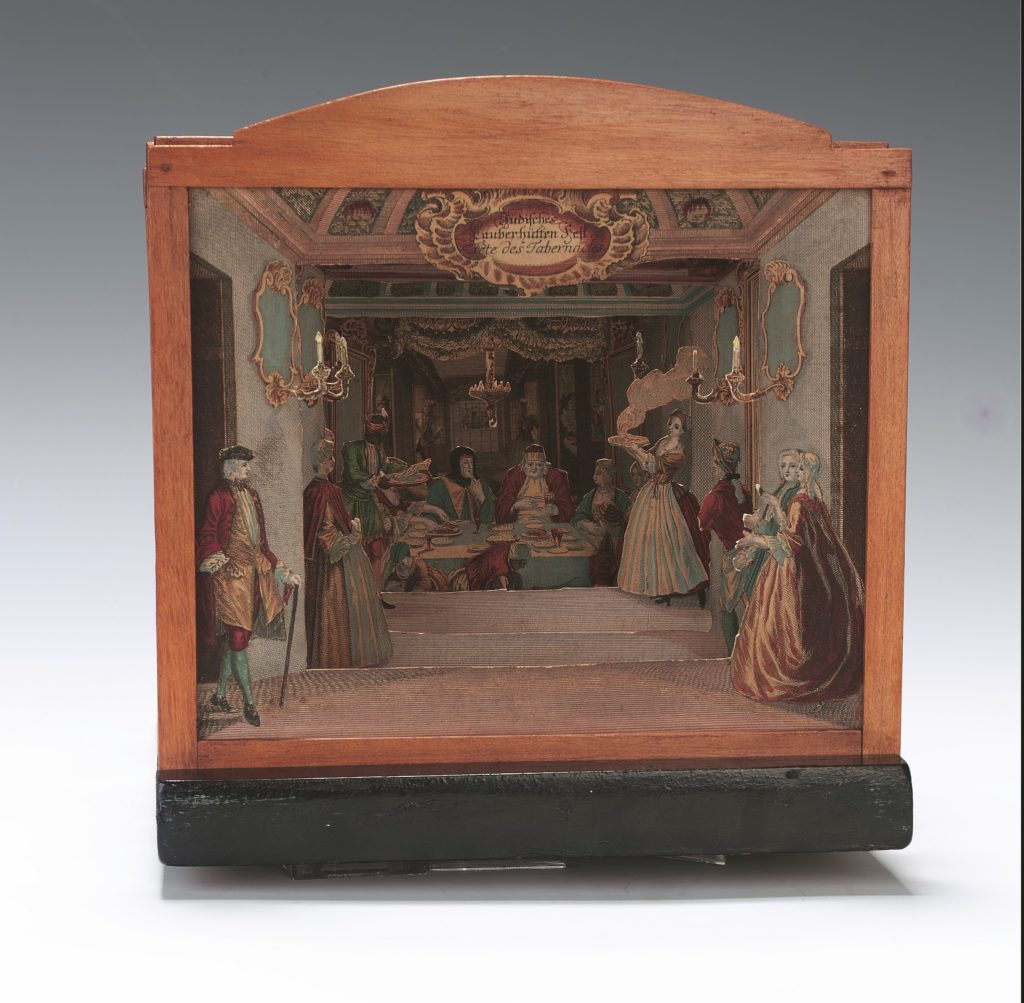Sukkah Diorama: Revealing Black History

The month of October has been established as Black History month since 1986. In its 31st year, the Jewish Museum is focusing on a few objects from its collection in a series of blog posts and in tours throughout the month focused on race in religion and race in holy scriptures, with one of the first objects we look at, being the miniature theatre of the Sukkah.
A Sukkah is a three-walled make-shift tent, with a natural roof used during the Jewish Festival of Sukkot celebrated on the 22nd of Tishrei, which is usually around September or October. It is the Jewish harvest festival and reminds Jewish people of the Israelites’ wandering in the desert for 40 years after being freed from slavery in Egypt (Exodus 13-14) and receiving the Ten Commandments (Exodus 20:1-26). While the Jewish people were wandering through the desert, a ‘cloud of glory’ surrounded and hovered over them as they crossed the wilderness. During this time the Jewish people lived in temporary shelters or booths made from branches, called Sukkot in Hebrew. Today, Jewish people around the world build Sukkahs outside their homes remember how God protected them and cared for them in the wilderness. It is a tradition to take meals in the sukkah which must have three walls and a temporary roof covered with leaves or branches with gaps, so that those inside can see the stars.
Shown above is a miniature of a sukkah, believed to have been produced by Martin Engelbrecht in the 1730s. These miniature theatres became increasingly popular from the 1740’s, often used as wedding or Barmitzvah gifts. However, Engelbrecht and his brother would create cards, from the 1730s onwards, often depicting religious scenes and slot them into display boxes such as the one seen above.
If you look closely, you will see that the family is attended to by two black servants in the Sukkah. One wearing blue, on the left-hand side of the miniature theatre and another, wearing red, bending down at the front of the table. Like the Jews during the story of Sukkot, the black boy in blue is also distant from home, most likely taken as part of the slave trade.
The servant on the left-hand side, is wearing a style of dress extremely common in European depictions of black men during the 17th and 18th centuries. He wears formal clothing including a special uniform worn by servants, embellished with blues and golds to symbolize his owners’ wealth. He, himself is also acting as a signifier of his owners wealth (because he is owned rather than free). He reveals a type of exoticism, as we see a feathered turban-style hat on his head which seems to resemble the styles of the Indian and Ottoman worlds, rather than anything authentically African. It shows the pageboy painted with the darkest complexion as he serves the white (potentially Jewish) masters. Their function is to indicate the social standing, someone who is educated, relevant and involved in the New World Economy.
A David Dabydeen states, the blacks existed as a commodity, traded in the same way as coffee, and in this way he has been objectified by his masters.